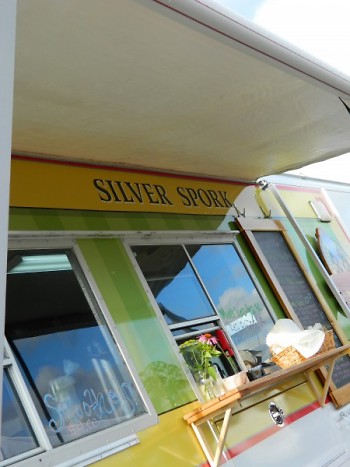The Beat Reporting Backstory
When interviewing for an internship at The Rapidian, Rapidian staff explained that one of the interns would be tasked with organizing a group of reporters around a specific section of news happening within the city. Somewhere between trying to not say anything embarrassing and attempting to be impressive I was able to actually listen and consider this idea of organizing citizen reporters around their areas of interest, and it intrigued me.
I was curious to understand how information and news stories are distributed among Rapidian reporters. I learned quickly that reporters are able to cover any story or event that they choose, no governing body needed. Though I am staunchly in favor of this freedom of choice, I did wonder if citizens working mostly on their own left any holes or overlaps in coverage. I could see how the idea of organizing reporters could help eliminate these problems. I thought this could be a postive direction for The Rapidian, and I was excited to have a chance to contribute.
In case you were worried, my interview story has a happy ending. To my delight, Holly Bechiri ended up hiring me as her editorial intern. After my initial excitement wore off, the realization set in that founding this first group of reporters was no longer some interesting, abstract concept: it is now my official job and I am ready to tackle it.
Beat Reporting 101
Beat reporting is, in a way, The Rapidian 2.0. It serves multiple purposes. First, the process of beat reporting can help streamline the citizen journalism process by organizing ideas and ensuring both a greater volume of coverage and a greater variety within specific areas , which is a great benefit for the readers.
Second, and definitely more importantly, is the value of the experience for the beat reporters themselves. They have the opportunity to meet and work with other passionate, like-minded community members on an area of the news that most interests them.
Beat reporters:
- Have the power: they set up and manage their own communities.
- Get together: either in person or simply chat by email or Facebook, if it's more convenient.
- Collaborate with others: cover larger events together or examine similar stories from different viewpoints.
- Share knowledge: such as photography, audio/video, editing or interview skills to help create the your most well-rounded and dynamic stories.
The Food Culture Beat Reporters
Luckily, I was able to choose a topic for the beat I was heading up, and it was an easy choice: food culture, all the way. Food culture means coverage of all aspects of food happening within the city. This ranges from gardening to restaurant reviews, brewing, cheese-making, organics, food events and anything and everything in between.
The food culture beat reporters are off and running. We had our first meeting at Uncle Cheetah's soup shop at the beginning of August: a small group of foodies talking food and having ice cream, bouncing ideas off one another, getting ideas for stories and making plans to meet again.
We are still gladly welcoming new members. If you have an interest in joining up or learning more, our next meeting is at at 7 p.m. on Tuesday, September 6 at Brewery Vivant. If you make it to this next meeting, feel free to email me with questions or join our Facebook group for the most up-to-date information.
The Rapidian, a program of the 501(c)3 nonprofit Community Media Center, relies on the community’s support to help cover the cost of training reporters and publishing content.
We need your help.
If each of our readers and content creators who values this community platform help support its creation and maintenance, The Rapidian can continue to educate and facilitate a conversation around issues for years to come.
Please support The Rapidian and make a contribution today.

